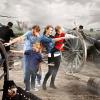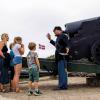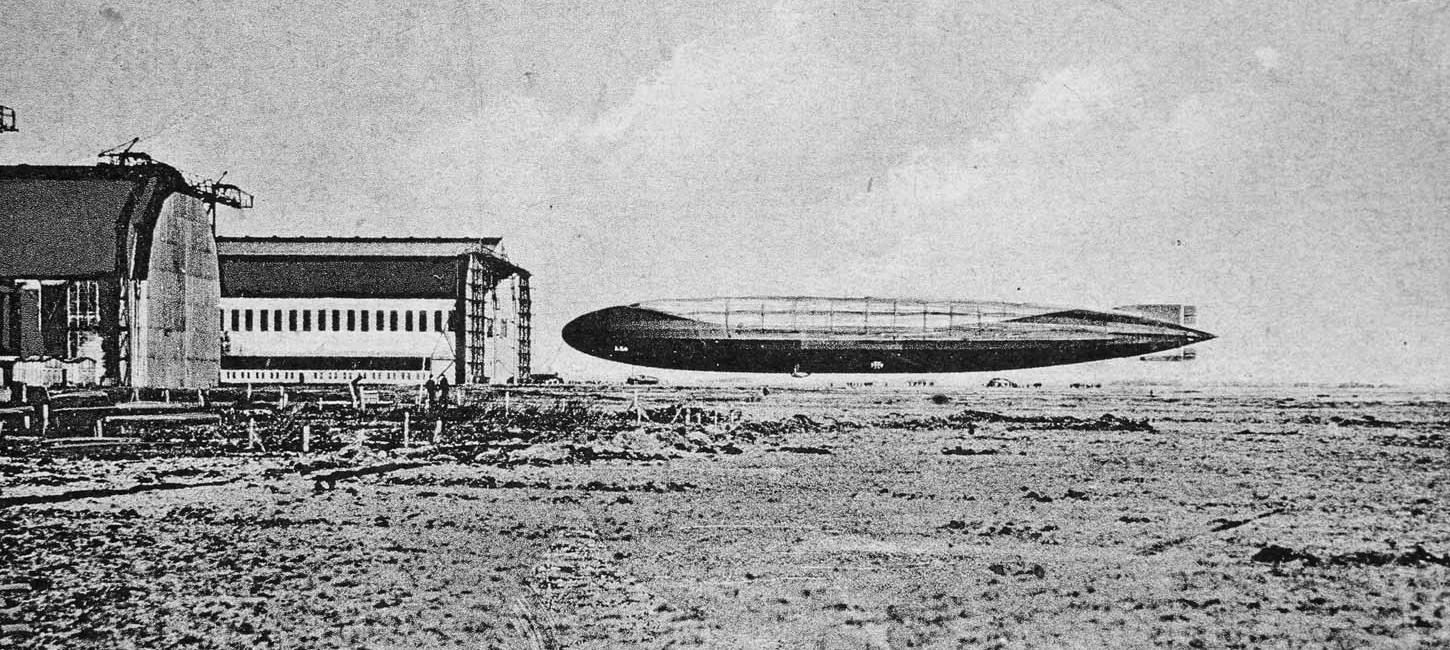
Zeppelinbasen by Tønder
When the First World War broke out in 1914, the German fleet had but one airship: the Zeppelin L 3.
The German Navy’s need for airships increased rapidly in the first few months of the war; and as early as September 1914 there was a proposal on the table for an airship base at Tønder.
The first 2 halls were finished in March 1915. These halls were 180 metres in length, 31 metres in height and 40 metres wide. On 23 March 1915 the first airship, Parceval PL 25, landed in Tønder. It was stationed in Tønder for 8 months.
On 25 April 1915 the first Zeppelin, L 7, landed in Tønder. The base was basically a small town in itself, being self-sufficient in almost everything: own gasworks, waterworks, electricity power plant, district heating station, sewage treatment plant and complete sewer system, all bearing witness to a fantastic engineering feat that was built and made operational within an extremely short space of time.
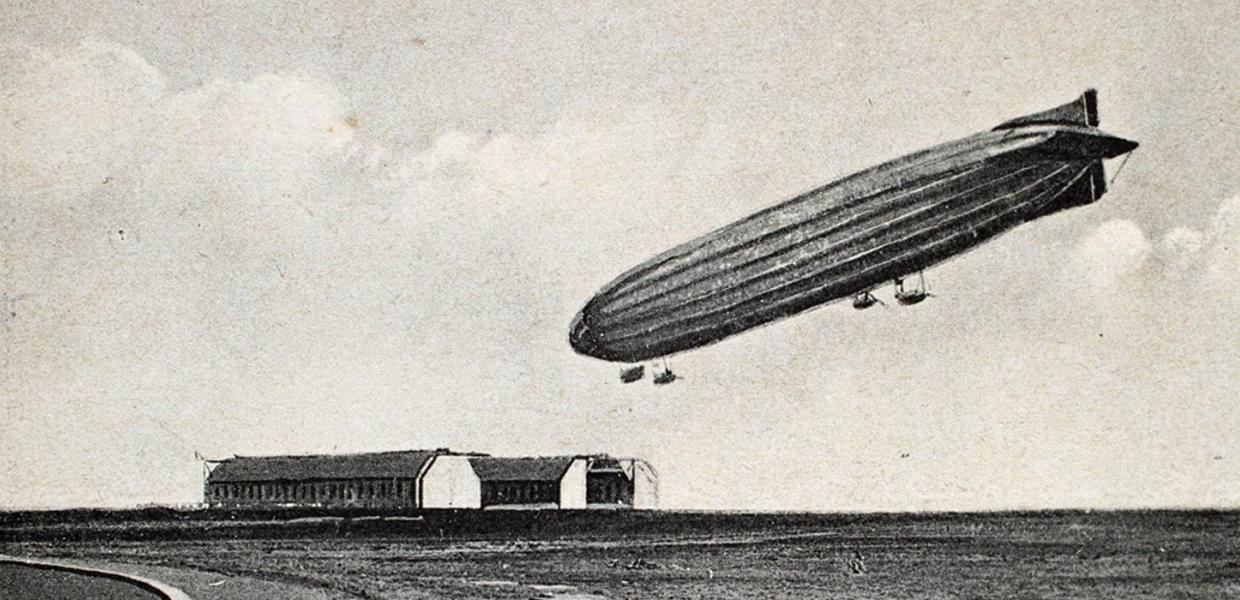
Photo:Museum Sønderjylland
The base consisted of the following facilities:
Airship halls "Tobias" and "Toni" with capacity for one airship in each.
Airship hall "Toska" with capacity for two airships.
Hangar for 5 fighters of the type Albatros D III.
Anchorage for temporary parking of an airship.
Railway line both for internal use on the base and with a connection to the Marsh line (Tønder-Tinglev).
Radio station for communication with the airships via telegraph.
Locating beacons which the airships could use to navigate.
Searchlight on rails.
Beacon on the north-western end of "Tobias'" roof.
Underground petrol tanks:
The "Tobias" and "Toni" halls each had a storage capacity of 10,000 litres.
"Toska" had a storage capacity of 30,000 litres.
Gasworks and tank facility of 50,000 cubic metres.
District heating station with boiler and district heating for the base.
Waterworks.
Sewer system and sewage treatment plant.
2 workshops.
Weather forecasting station.
Accommodation barracks for around 600 soldiers.
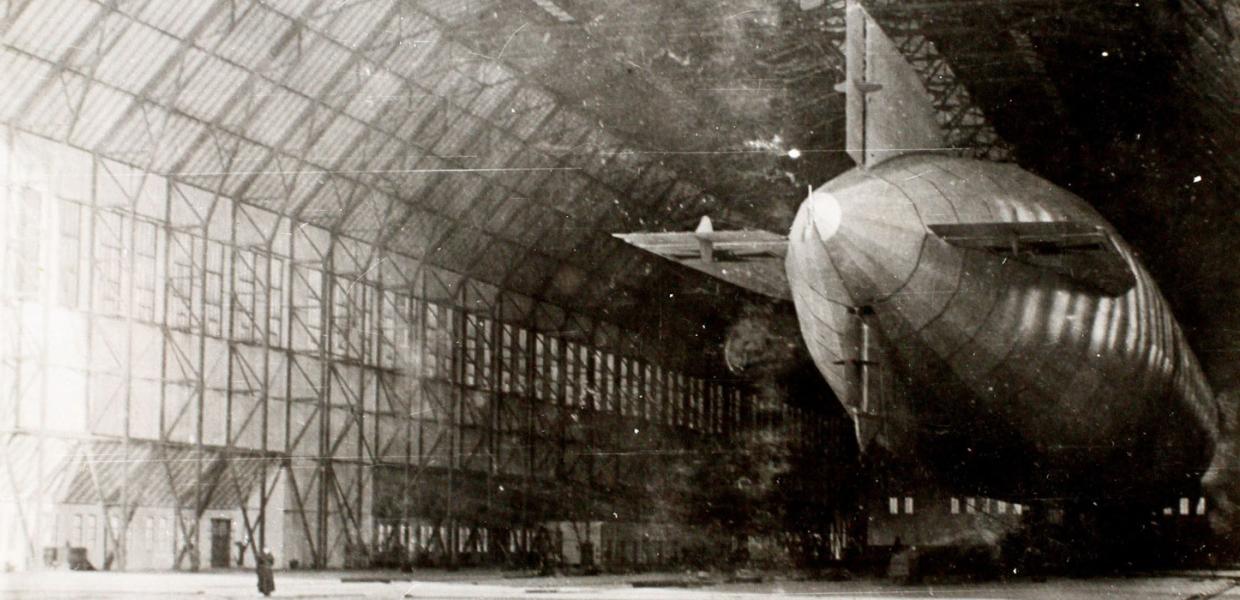
Photo:Museum Sønderjylland
The attack on the Zeppelin base
Tønder’s Zeppelin base was a thorn in the side of the British throughout the First World War, but it wasn’t until the summer of 1918 that the British were in a position to launch a decisive attack on the airbase. The problem up to that point had been the range of their aircraft; it was simply too far from England to Tønder.
The British solved this problem by building the world’s first dedicated aircraft carrier, "H.M.S. Furious", which had both a take-off and landing deck. They also now had an aircraft that was ideal for the job: the single-engined fighter, the Sopwith Camel.
On 18 July, H.M.S. Furious left England and set course towards the Danish coast. Onboard were the seven aircraft that were tasked with carrying out the attack. The aircraft carrier also had 17 escort vessels as protection. At 03.04 on 19 July, the world’s first-ever airborne attack from an aircraft carrier against a target on land (the Tønder Zeppelin base) was launched. The distance of 150 km to Tønder from the aircraft carrier meant that the aircraft didn’t have enough fuel to return and would have to land in neutral Denmark after the bombing raid.
At 04.35 the first of a total of five bombs fell on TOSKA. L-54 and L-60 were in the hall at the time. These airships were totally destroyed and smoke billowed out of the bomb holes in TOSKA’s roof. Apart from the holes in the roof and smoke damage, however, TOSKA itself suffered little damage. TOBIAS was hit by two bombs, whilst in Tønder a stray bomb fell on the market square.

Photo:Verdenskrigensspor.dk
Restoration of the aircraft hangar
After the First World War, Germany was ordered to decommission all military installations and buildings. This didn’t have any effect on the base in Tønder, which, following Reunification in 1920, was now located in Denmark, which is why the Zeppelin base in Tønder is the best preserved Zeppelin base remaining in Europe. Today only remnants of the foundations are left from the large Zeppelin halls, whereas in the late summer of 2018 work began on major restoration work on the aircraft hangar, including a completely new roof for the entire hangar.



